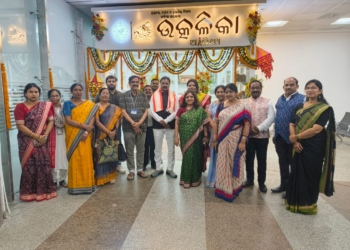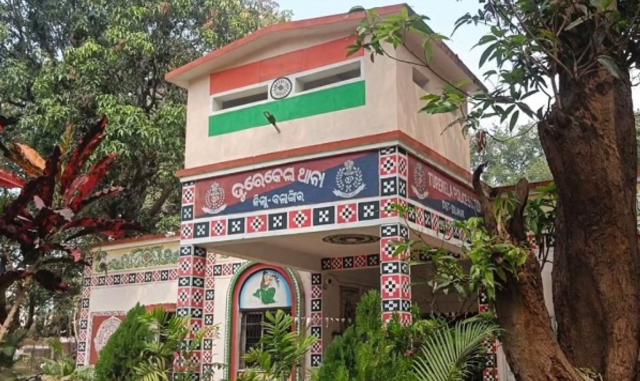The 5th edition of the Jagatsinghpur Heritage Walks (JHW) unfolded as a beautiful tribute to the district’s rich history. Approximately 40 heritage enthusiasts from across the state and various backgrounds came together, not only to explore the sites but also to engage with the stories, memories, and pride woven into the landscape.
The journey began at the ancient and spiritually vibrant Astasambhu Temple in Hajipur, a place steeped in faith and folklore. Participants sought the blessings of Baba Kadambeswara, Astasambhu, and Maa Chhinnamasta, setting a tone of reverence for the day.
According to legend, this temple is believed to house eight Shiva Lingams established by the Pandavas. The local tradition holds that the temple has been destroyed and rebuilt multiple times due to recurring river floods and the lack of a protective embankment. The current sanctum sanctorum is a modern restoration of the original structure. During the visit, several remnants of the earlier temple were documented, believed to be fragments of its ancient architecture.
After learning about the significance of this Mahabharata-era site and the many ancient relics within the temple complex, the group headed to the Panchasakha Dhyana Pitha under the guidance of JHW convenor Srikanta Singh. This “pitha” was established by Achyutananda of Panchasakha around 600 years ago after receiving the blessings of Lord Jagannatha. It now houses a beautifully adorned Jagannath Temple.
GOPINATH JEW TEMPLE:
Following the visit to the Astasambhu Temple, the group proceeded to the nearby Gopinath Jew Temple in Parbatipur village. There, the heritage walkers had a “darshan” of the grand and ancient idol of Lord Gopinath, along with the Ashtasakhi idols. The temple also features old idols of Varaha, Narasimha, and Trivikrama as the presiding deities.
The Gopinath Jew Temple is believed to have been built atop the ruins of an earlier structure. The current building is comparatively small, especially in relation to the massive idol of Lord Gopinath, which supports this belief. According to the temple priest, the idol is situated significantly below the current ground level. In a manner similar to Shiva temples, visitors must descend several steps to reach the sanctum. Even during dry seasons, water accumulates around the deity’s feet.
The priest explained that during the rainy season, water naturally seeps in, submerging the deity’s feet up to the ankles. Because of these consistently damp conditions, the large and heavy idol is gradually sinking into the soil. Urgent intervention from either the government or private organisations is necessary to preserve this historic shrine.
Following this, the first e-magazine of JHW was officially unveiled at the temple premises by senior citizens of the village. The heritage lovers also conducted a campus cleaning drive and a tree plantation drive.
Notable participants included Biswaranjan Dehury of Odisha Heritage Walks, heritage enthusiast Chandrabhanu Mishra, and locals such as Aditya Prasad Ghosh, Prabhudutta Rout, and Hrudanananda Behera, along with residents and temple priests from the Astasambhu Temple, Panchasakha Pitha, and Gopinath Jew Temple.
This walk was not merely about tracing history; it was about preserving voices often unheard, memories often forgotten, and spaces often overlooked. Once again, JHW demonstrated that heritage is not just what we inherit but what we choose to honour, protect, and pass on to future generations.





























